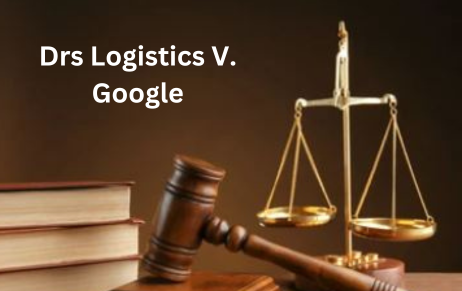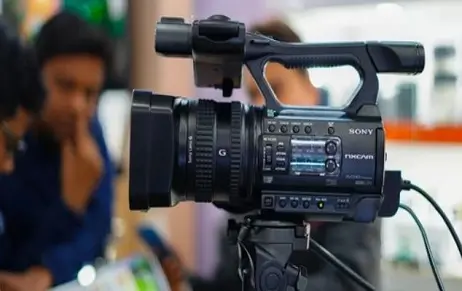Case Summary: The plaintiff in this case, Bhaktivedanta Book Trust, sought protection from copyright infringements…
Business Method Patents: Non-Patentable Only In Books?
The legal situation of granting business method patent depends from place to place. The reason being that Trade-Related Aspects of Intellectual Property (TRIPS) did not expressly address the said patent issue. Thus, countries grant (or do not grant) looking upon its local conditions and national policies. That said, India is one of the country that does not believe in granting business method patent and has declared so statutorily in Section 3(k) of the Patent Act, 1970 and Entry 08.03.05.10 of the Patent Manual.
It has always maintained the stance of non-patentability of business method. Unlike USA, it never changed its position. It was only after the infamous case of State Street Bank & Trust Co. v. Signature Financial Group that US allowed business methods to be granted patent protection under the US Patent Law. The United States Court of Appeals for the Federal Circuit stated that since the Patent Act 1952 business method patents must fall under the ambit of patentability. The Federal Court over-ruled the lower court and held that practical utility and essential characteristics are the two factors needed to be seen for determining patentable subject matter.
On the other hand, European Commission sides with India and states that business and invention should not be mixed together otherwise it will hamper development, innovation and creativity. It is a fact that a business has limited number of methods of doing a business. Granting monopoly will restrict small players to rise and increase the licensing cost exorbitantly.
In India, Patent Office considers a particular method to be a business method if it involves a monetary transaction or mere marketing or sale purchase methodology. Section 3(k) expressly bars business method patents as innovations. The landmark case of Yahoo v. Controller and Rediff was a prominent case where J. Prabha Sridevan discussed Business Method Patents. She held:
“We must place ourselves in 1998, to decide the patentability and what appears so easy and familiar today was new then. Even if we go back in time to 1998 the nature of invention is still a method of doing business. That does not change. There are huge innovations in the computers themselves, but the invention claimed is not for the machine but for the method. From whichever point of time we look at it, it still looks to be a business method.”
A patent application having claims directed to a software program/algorithm having a bunch of computer instructions cannot be claimed as an invention. The exclusions are carved out for all business methods and, therefore, if in substance the claims relate to business methods, even with the help of technology, they are not considered to be patentable.
As per recent decisions by the Controller of Patent, the trend is only in black letters and is not being followed to the T. In an interesting turn of facts and reasoning, three applications of business method patent were granted by the Controller Office. This post will dissect the three applications so granted.
I. In the matter of Patent Application No. 830/CHENP/2009 filed on 12/02/2009
The Applicant Facebook had filed for patent of a method for generating personalized data for viewing of user of a social network. Soon a series of objections were filed opposing the patent by virtue of Section 3(k) of the Act. It was claimed that the method is purely functional in nature and the whole patent falls under the ambit of business method patents. The Applicant then amended their claim 1 to 6 by including so called ‘hardware limitations’ in their method steps. The observations of the decision while accepting the amended claims randomly record that the “present subject matter implements a technical process and has a technical effect.” The absence of a proper definition of what constitutes a technical effect has what resulted into the grant of patent. The decision does not proceed to explain what were the actual technical effects that the Facebook had in its method patent.
II. In the matter of Patent Application No. 6799/CHENP/2009 filed on 18/11/2009
The Applicant Facebook had filed for patent of a method of providing access to user profile data maintained by a social network website to a third-party application server; a method of sharing user profile data between a social network website and a third-party application server and a system for sharing user profile data between a social network website and a third-party application server. The major opposition that the application faced was that it was nothing, but mere algorithms implemented through software and thus cannot be allowed u/s 3(k) of Patents Act, 1970. The Applicant in response submitted that the present invention included hardware limitation and provided technical improvements and benefits like checking privacy setting associated with the user profile and based on the privacy setting the access is provided to the third-party application and the third-party application personalizes the user content data. The Controller Ms. Subhra Banerjee relying on the written submission by the Applicant proceeded to grant patent to Facebook. The same problem arose here; the decision did not specify what was the technical effect or for that matter hardware limitation. It has been time and now held that hardware limitation should be the one that essentially captures the subject matter of the patent. However, in the present application, there was no such essential link between the method and the hardware.
III. In the matter of Patent Application No.461/KOLNP/2009 filed on 03/02/2009
The Applicant Apple had filed patent for a method for browsing data items with respect to a display screen associated with a computing device and electronic device. The purpose of the alleged invention was to browse media content with multiple browsers whose operations are synced. The Applicant pleaded that the ‘claimed method’ should not be read as computer programme as it only permits the computer program’s functionality. Deputy Controller of Patents and Design Ms. Nirmalaya Sinha accepted the claims of the Applicant. The whole decision is ambiguous as the application clearly reeks of being a business method. However, the basis of grant was given on technical aspects and practical utility which are of no concern to business method patents.
The grant of patent in all the above three applications show a sorry state of affairs and undue advantages of absence of definitions of terms like ‘technical effect’, ‘novel hardware’ and ‘practical utility’. It is for the time to come, when these decisions will be challenged and hopefully logic will prevail.
Author: Esha Himadri, Intern at Khurana & Khurana, Advocates and IP Attorneys. Can be reached at [email protected].
References:
[2] Bandyopadhyay TK, Alyappan A (2014) Business Method Patents and IT Industry: An Analysis, Intel Property Rights, 2:112.
[4] Yahoo v. Controller and Rediff, 2012 (49) PTC 502 (IPAB)
[5] State Street Bank & Trust Co. v. Signature Financial Group, 149 F.3d 1368



